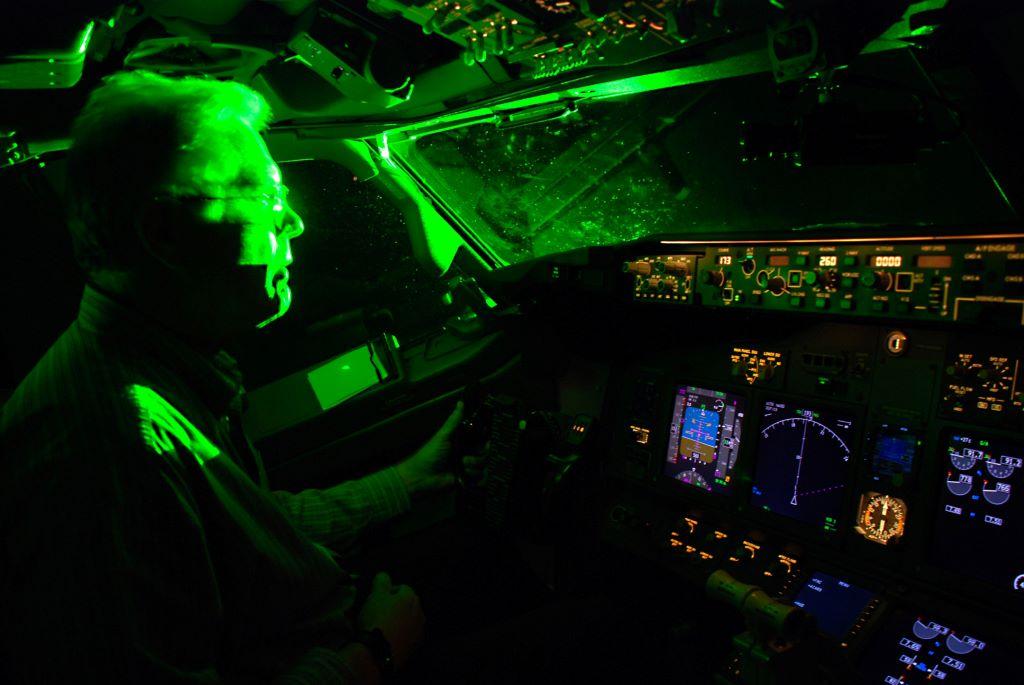What's Behind The Rise In Laser Pointer Incidents?

On February 7th, 11 airliners were struck by lasers in a one-hour period near the Seattle-Tacoma International Airport (SEA), federal officials say, although no injuries were reported.
In another incident, the cockpit of a Gulfstream G-550 inbound to Trenton, New Jersey, was illuminated for 5 to 8 sec. with a green laser, and while the crew was startled, no injuries resulted. The crew reported the incident to New York Center.
A Hawker 800 crew approaching Colorado Springs from the south was hit at 15,000 ft. with a green laser that was "incredibly distinct." They reported the incident to Springs approach.
In other incidents, A Part 135 charter operator in Augusta, Georgia, said several of its aircraft were hit on the same night with lasers within six miles of Daniels Field.
A Delta Airlines flight ahead of the charter flight reported a hit as well. Perhaps because of the warning, a King Air pilot was able to pinpoint the strike as coming from nearby Ft. Gordon, Georgia. The Army installation later posted laser strike information on its Facebook page to help educate local residents about the dangers. Calls to Ft. Gordon’s public affairs office seeking information about the strikes were not returned.
To locate the perpetrator, the Georgia charter operator launched an aircraft of its own to the same area hoping to lure the laser pointer out, but to no avail.
The incidents are the latest in a growing number of laser strikes – mostly involving the potent green lasers – that hit a record high in 2021. The FAA recorded 9,723 reports from pilots – about 27 incidents per day during the year, and up 41% from 2020 figures of 6,800.
So far in 2022, the numbers continue to trend upwards, according to the FAA’s laser strike database. In January, the agency reported 813 strikes, a significant jump from 540 reported in January 2021.
Since 2010 when the FAA began recording data, pilots have reported 244 injuries.
While no deaths tied to laser strikes have been reported, the rising numbers increase the likelihood of a future serious incident or accident.
Lasers represent a threat to pilots because the powerful units – available on Amazon for as little as $29.95 – can temporarily blind pilots if it hits their eyes directly.
“The greater a laser pointer’s output power, the more likely it will cause serious eye injuries, burn skin and temporarily — or permanently — impair the vision of pilots,” according to the American Academy of Ophthalmology. “People who shine lasers at aircraft face FAA fines of up to $11,000 per violation and up to $30,800 for multiple incidents.
The FAA issued $120,000 in fines for laser incidents in 2021, however, fines and even the risk of prison time do not appear to be much of a deterrent.
One major hurdle to more arrests for laser violators is the difficulty in finding the people involved. Many perpetrators caught to date aimed a laser at a law enforcement helicopter while the craft was low to the ground. As long as the pilot was not injured, it was simple for the pilot to return to the location and pinpoint the shooter while calling in ground vehicles to capture the suspect. For jets targeted, pinpointing isn’t quite as easy.
Laser Pointer Safety.com highlights the hazards lasers represent. The site was created by Patrick Murphy, a laser light show veteran who was forced to rethink his business practices after he learned of the hazards lasers represent to aircraft.
Included in the site are sections on FAQs for Laser Doubters and Why Anti-Laser Control Measures Likely Will Be Ineffective. It also urges pilots to become familiar with tactics to reduce the severity of an incident if they are targeted.
In discussions with the Hawker 800 crew, the captain said, “maybe banking 20-deg. right would have helped or maybe scrunching down in my seat, but there really wasn’t much time to react.”
A lingering question is why people continue to aim lasers at aircraft.
The FAA’s laser strike investigations have found various reasons, ranging from people who do not understand how powerful their laser is to individuals who intentionally point a laser at an aircraft.
Murphy was a bit more direct when asked to speculate on the reasons.
“I think these people fall into one of two categories,” Murphy says. “One is people who simply don’t understand the danger of their laser pointers and the other is people who just don’t care.”
Some blame strike numbers on people stuck inside during the pandemic who wanted to simply make mischief. However, the numbers also spiked from 2015 to 2016.
The FAA has compiled a list of possible reasons laser pointer incidents continue. They include:
• The availability of inexpensive lasers
• The abundance of lasers in stores and online
• The number of lasers given as gifts
• Stronger power levels that enable lasers to hit aircraft at higher altitudes
• Green lasers, which are more visible to the human eye than red ones
• Greater awareness by pilots reporting laser incidents, due in large part to the FAA’s extensive outreach program




